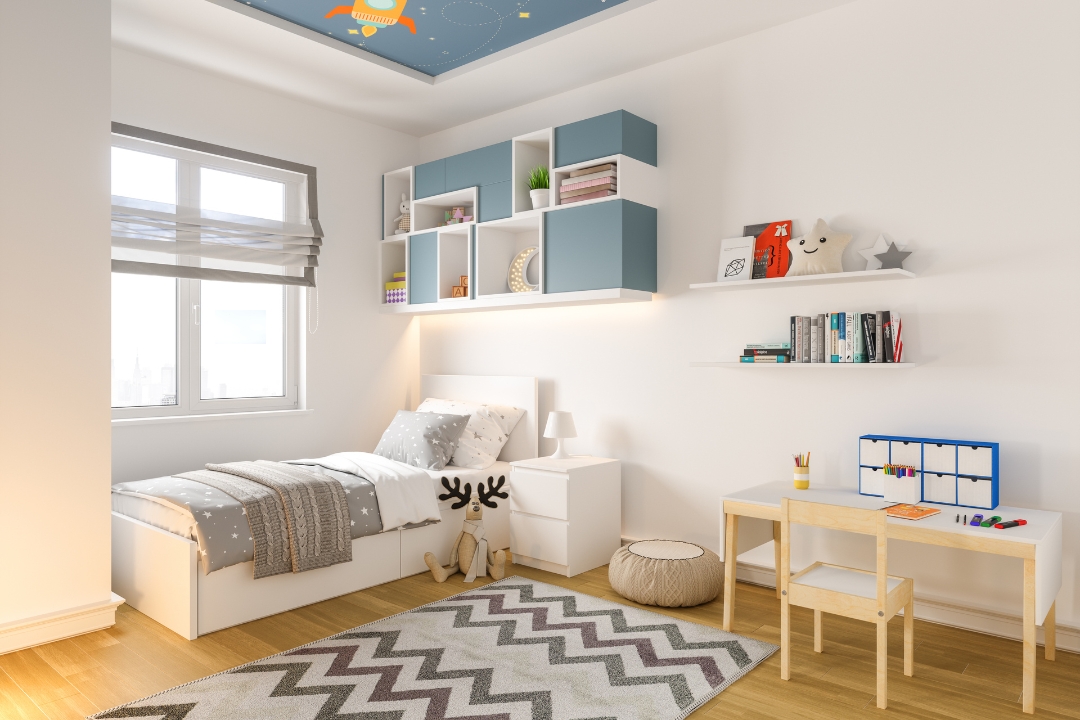The spaces our children inhabit have a significant impact on their development, moods and overall well-being. Thoughtful home décor choices can help nurture your child’s growth, while an environment that doesn’t meet their needs could negatively affect their mood and behaviour. This article explores how your home’s aesthetic and layout impact your child and provides tips on creating an uplifting, stimulating and soothing environment.
Providing Comfort Through Home Décor
A child’s bedroom should be a sanctuary—a space where they feel safe, relaxed, and able to rest. Thoughtfully selected bedding, soft furnishings, and lighting creates a peaceful atmosphere that encourages restful sleep and emotional security.
Opt for calming colours like soft greens, blues and neutrals rather than overstimulating bright hues. Natural materials like cotton and wool help regulate temperature, ensuring comfort throughout the seasons. Blackout curtains minimise disruptions while incorporating personal touches—such as family photos, artwork, and familiar toys—can enhance a sense of belonging.
Beyond aesthetics, a tidy and organised room supports mental clarity and relaxation. Reducing clutter and ensuring easy access to belongings can minimise stress, helping children feel more settled and at ease.
Stimulating Growth Through Playful Décor
Spaces designed for play and exploration are essential for nurturing creativity and learning. Playrooms should include interactive elements such as arts and crafts areas, imaginative play stations, and book nooks to encourage curiosity.
Consider adding:
- Blackboard-painted walls for doodling, writing messages, or displaying creative work.
- Shelving stocked with books to inspire independent reading.
- Accessible arts and crafts storage baskets filled with paints, modelling clay, or craft supplies.
These thoughtful additions cultivate self-expression while ensuring that play areas remain engaging yet organised, allowing children to explore their creativity without distraction or overstimulation.
Supporting Emotional Well-being Through Home Décor
Home décor can also play a vital role in supporting children’s emotional health. Instead of noisy electronics, designate areas for quiet reading, relaxation, or self-expression, offering children a calming retreat when needed.
If a child appears sad, anxious, or frustrated, creating a soothing space where they feel comfortable expressing themselves is key. Compassionate listening and validating their emotions can help them feel supported. If mood issues persist, seeking guidance from a GP or therapist may provide valuable insight.
For foster carers, creating a safe and welcoming space is crucial in helping children adjust and feel secure, and they can get more information on how to do this from their foster care support services. Thoughtful décor—like soft lighting, soothing colours, and familiar personal touches—can provide comfort during transitions or uncertainty.
Whether a child is biological, adopted, or fostered, ensuring they feel heard, valued, and emotionally safe through intentional home design builds resilience and confidence.
A thoughtfully decorated home nurtures your child’s growth, creativity, and emotional well-being. By focusing on comfort, stimulation, and organisation, you can craft an environment that builds confidence and positivity. Small changes—like lighting, textures, or playful elements—can make a lasting difference. Take time to observe how their surroundings influence them and create a space where they feel safe, inspired, and truly at home.







Leave a Reply